People all over the world love to eat & Indians are no different. Diversity of Indian culture has ensured that the varieties of food available in India, would be a gastronome’s delight. Not just the main meals available in different parts of India offer difference in variety, but also the innumerable kinds of snacks available. There is some regional variation, depending on the part of India concerned but it can be safely said that - Samosa is surely the most popular Indian snack.
For the people, who may not be knowing about Samosa, it can be described as a fried dish with filling containing a mixture of potato, peas and chillies in the inside. It is usually triangular & cone shaped but sometimes may have different shape, depending on local modification. This popular snack is widely consumed with some local modification in different parts of Asia and Africa. The reason for this is because of its origin.
This popular Indian Snack did not actually originate in India, but in the Middle east Asia. One of the earliest mentions of this tasty snack can be found in a poem written by the Persian poet – Ishaq al- Mawsii, who praised this food in his poem of 9th century. Arabic cookbooks written during 10 to 13th century, describe the recipe for preparing this tasty snack.
As Islamic conquest of the Indian subcontinent took place, culture and foods of the middle east also found their way to India. Traders from central Asia brought Samosa to the Indian subcontinent in 13th century. Poet like Amir Khusro, who lived in 13th century & Ibn Battuta – the 14-century explorer have described in their texts about the popularity of Samosa among the nobles and gentry of Delhi Sultanate. A medieval Indian cookbook – Nimmatnama -i- Nasiruddin Shahi mentions how to make samosa.
With passage of time, the art of making Samosa has spread far and wide. Nowadays samosas are consumed in different forms in countries, as different and separate as – India, Bangladesh, Pakistan, Nepal, Maldives, Burma, Indonesia, Israel and many countries of middle east and Africa.
Samosas can be of different types/varieties. Some of the regional variations are – Meetha Samosa, Kheer Samosa, Vegetable Samosa, Non-Veg Samosa and Pocket Samosa. The description below is about normal Samosa, which can be prepared easily by even an inexperienced person, who doesn’t know anything about cooking.
Maida (Flour) – 250 gm
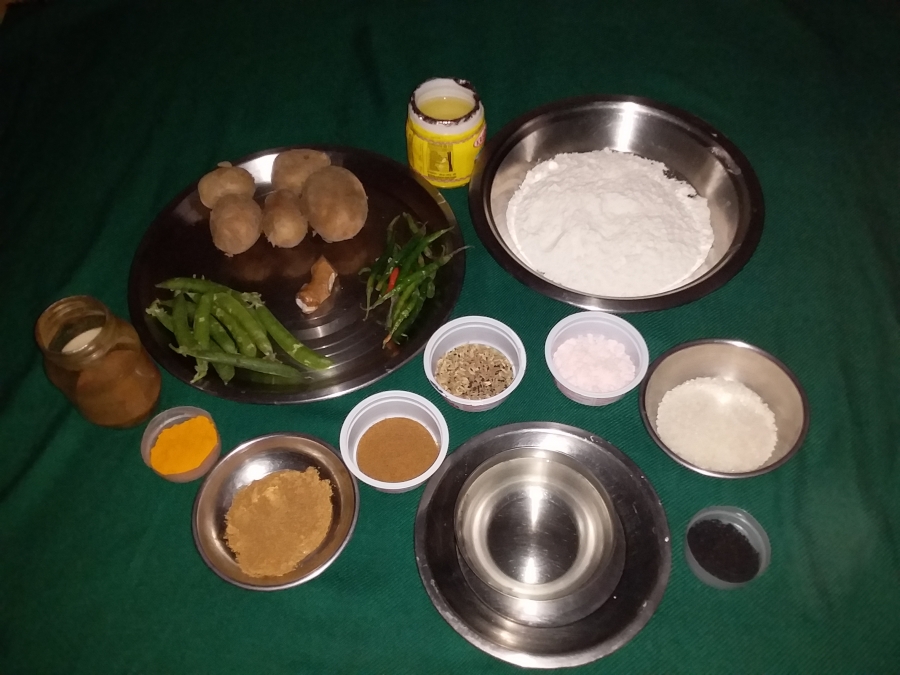
In the beginning the raw potatoes are washed properly, so that they are absolutely clean and fit for consumption. In a pressure cooker the potatoes are boiled adequately, but at the same time it shouldn’t get over boiled. Afterwards it is taken out of water and allowed to cool down. Once cooled, the potatoes are peeled and kept aside. The green peas are taken out from its covering and kept separately. The green chillies are cut into small pieces and kept aside. In the same way the ginger is grated and kept for later use.
The boiled potatoes are smashed into smaller pieces. Now the smashed potatoes are mixed with the green peas. In a karahi (container) 6 tablespoon oil is taken & the karahi is put on a burning oven with a medium flame. Once it is warm, Panch Phoron is added to the warm oil and when it starts popping then grated ginger, potatoes & peas are added to it and stirred. As the stirring is continued, turmeric powder is added to the mixture, followed by addition of Jeera powder, Coriander powder and green chilly.
When the potato gets fried, then garam masala powder is added to the potato mixture. As the mixture is stirred continuously, salt is added along with sugar. As the mixture gets fried, a typical aroma arises signifying the process. Once the frying is completed, this mixture is kept aside and allowed to cool down.
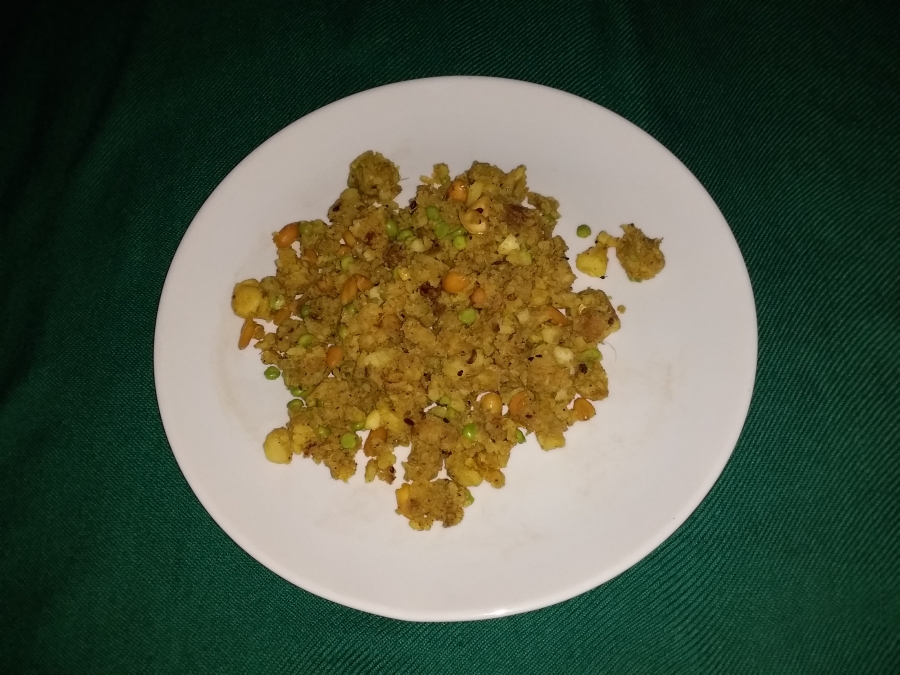
Now flour (Maida) is taken in a large plate with raised boundary (thali). Ghee is added to the flour and mixing is done by using a clean hand. Now soft compressible ball of this flour & ghee mixture is made. To this mixture black cumin and 1/4th teaspoon salt is added & mixed nicely. Now by small incremental amounts, water is gradually added to the flour to make a hard dough. Now from this total mass, small amount is taken and pressed to make a circular shaped puri by using a rolling pin. Now this circular puri is cut into 2 semi-circular halves by a knife.
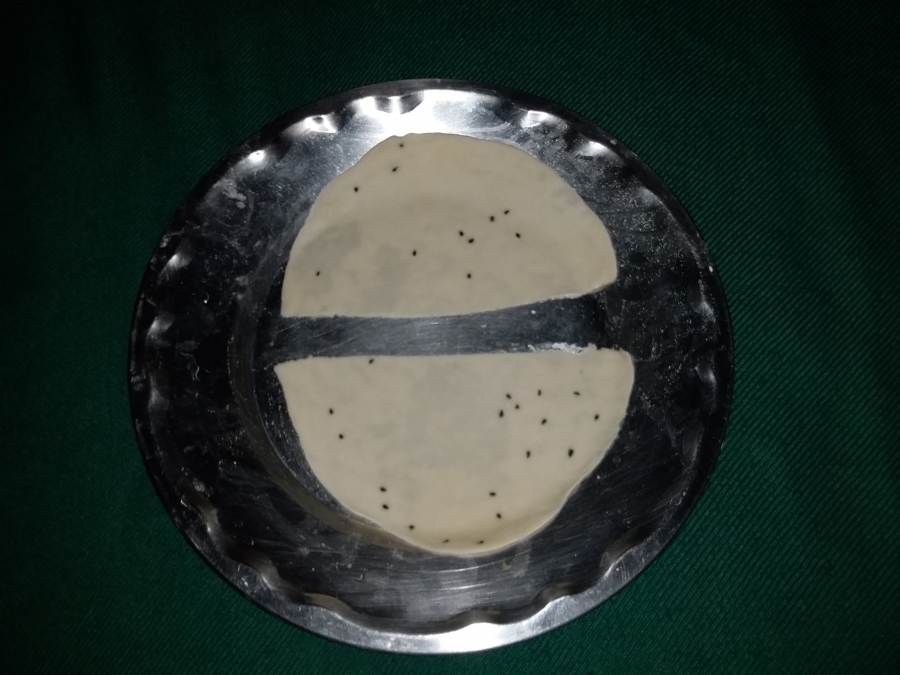
The 2 opposite ends of this semicircle are folded inwards in such a manner that one edge overlaps the previous edge and an inverted cone is produced.
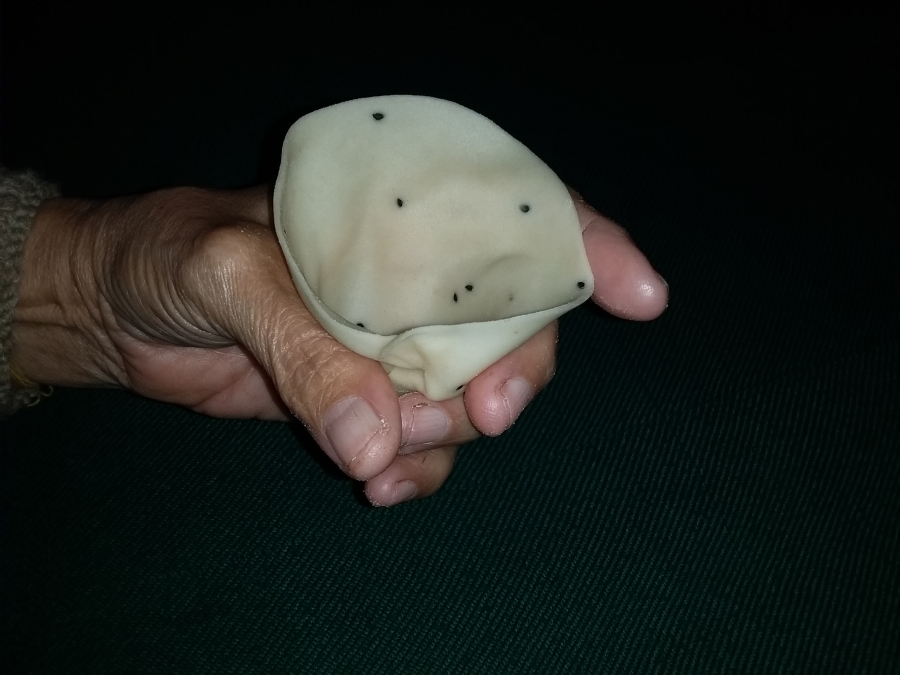
Once the basic temporary framework has been made, the empty portion is filled with the previously prepared potato mixture.
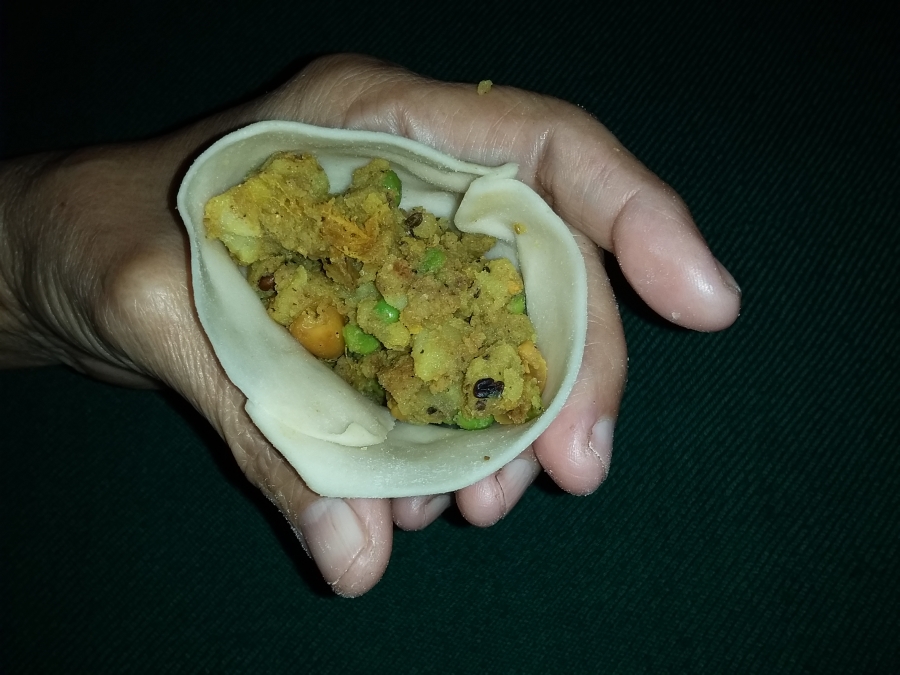
Once the stuffing in the inside of Samosa is completed, the two opposite upper sides of the cone are pressed together to form the elementary samosa.
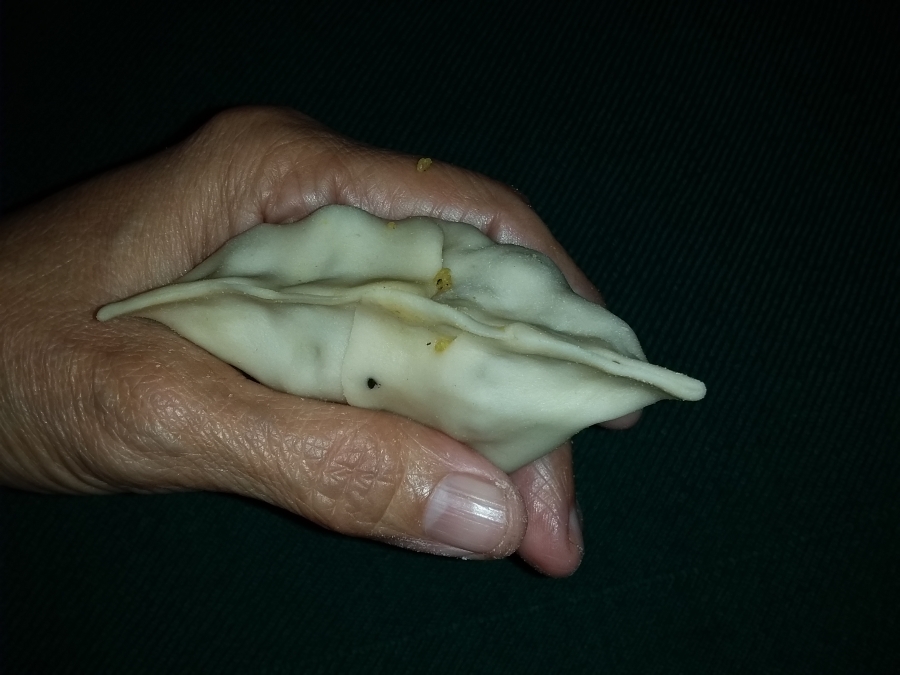
The previously mentioned steps are replicated multiple times, in the same manner to make multiple samosas from the original dough.
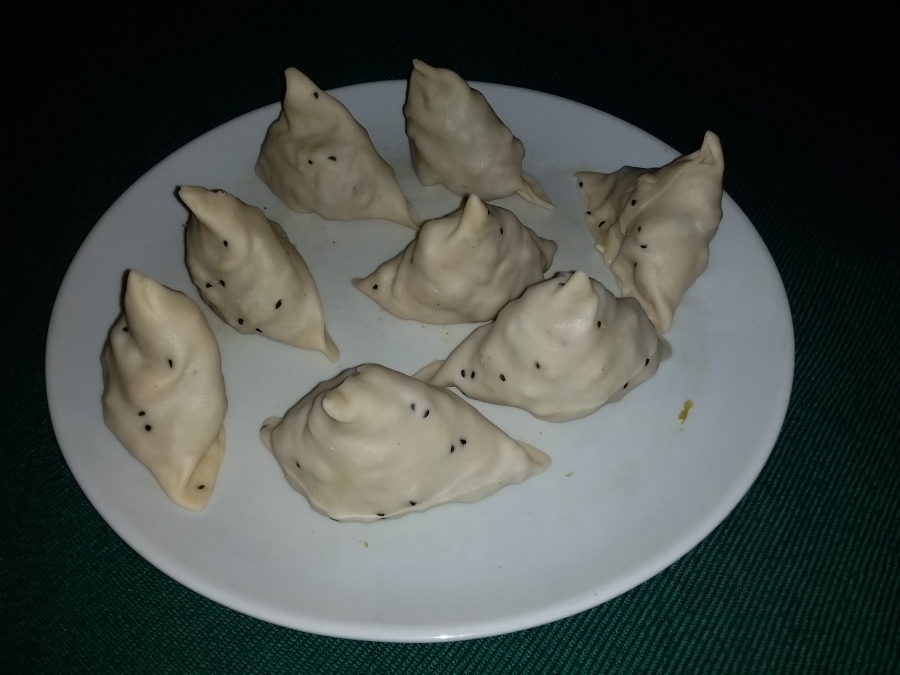
Now a karahi is put on a medium flamed burning oven, and adequate oil is added to it. Once it becomes hot, then previously prepared 4 to 5 samosas are put together in the container at a time for frying and stirred constantly but gently. The samosas are turned upside down so that it gets fried nicely till a golden colour is obtained.
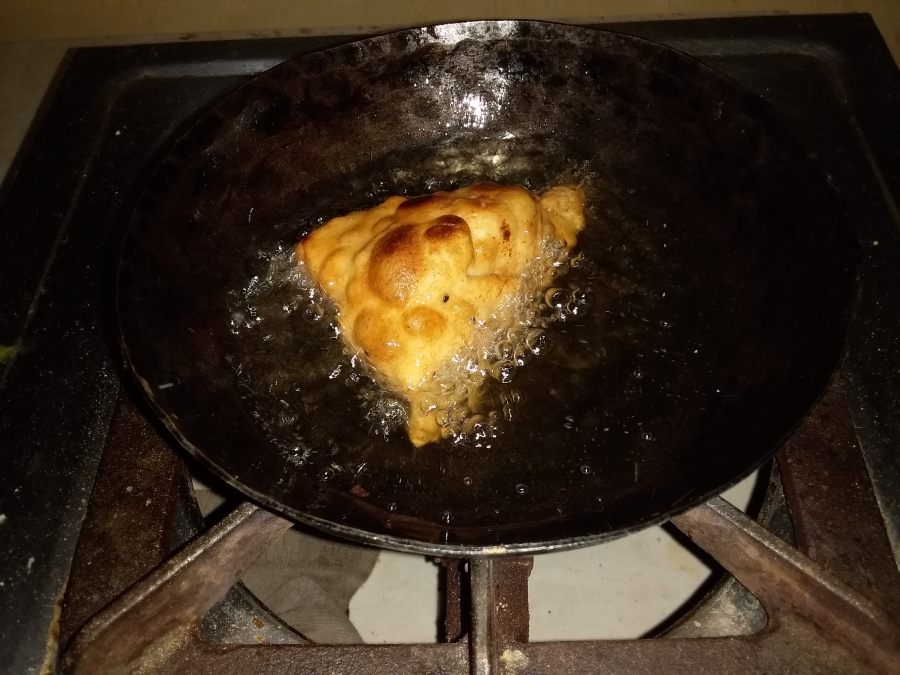
The hot samosa is now ready for serving hot along with tomato sauce or green chutney.
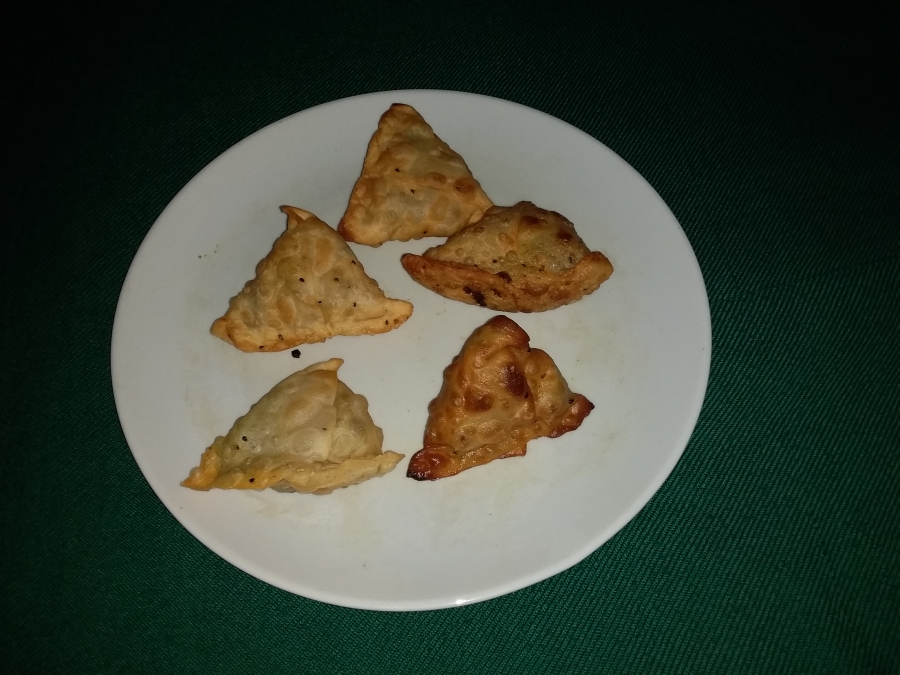
Samosa is the most common snack that is used in most Indian’s home for welcoming guests and this has been the norm for a very long time. Anyone who has had the opportunity of tasting this gastronomical delight, would know that its reputation is well deserved. The above discussion also highlights the fact, that this light snack is also very easy to prepare and can be done by everyone, even those who do not have any idea about Indian cooking. For those who still may be sceptic about the magical effects of this dish, they are most welcome to try this out.
(Disclaimer – As previously mentioned, Samosa preparation has been modified differently according to local taste in different places of the world. This description is strictly about the most common variety found in India.)